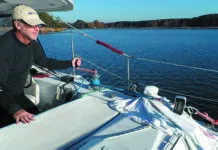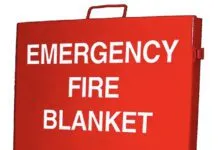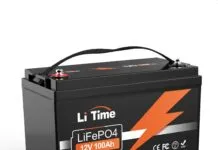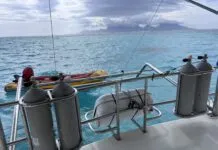
You’ve been out a few times with friends on their sailboat and now, you’ve caught the sailing bug and, be well advised, there is no vaccine or cure for this addiction.
Before jumping in however, and without considering the initial acquisition cost of your desired boat, let’s look at various costs associated with owning, operating and maintaining your potential sailboat. I say potential quite deliberately, simply because you should never jump on such an acquisition until you know all the related costs.
These costs will include (but are not limited to) insurance, maintenance and repairs, and marina or yacht club fees (if applicable). If trailering is more your style, the costs associated with the trailer and a proper tow vehicle will need to be considered.
Another thing to consider that will affect costs is the type of sailboat you’re looking for. Would you like a cruiser or a racer? Or perhaps a comprise racer/cruiser design that will give you a fairly good combination. Albeit, you won’t be heading to the America’s Cup, at least not just yet.
I will focus on an average and popular boat size found in the area of Quebec, Eastern Ontario, upper New-York and Vermont. For first-time buyers, in my humble opinion and by observation, a 26- to- 28-ft. cruising-style sailboat fits perfectly. It will provide excellent day sailing qualities yet be comfortable enough for two people to spend a few days or weeks cruising.
Another assumption is that a recent inspection has been performed prior to purchase and you are aware of any areas of concern that will need to be fixed or updated as well as what those costs will be. Depending on the price of the boat and your comfort level with risk, I would not skip the inspection process. A boat can look amazing but hide some very serious issues below her seemingly pristine appearance. Plus, your insurance carrier might insist on one anyway.
I would inquire with the seller if a maintenance log has been kept and if you could consult it. A proper maintenance log should not only include what was done every year but also the costs, giving you a more accurate idea of maintenance costs.
Now that you know what boat appeals to you and you are aware of any cost related issues the inspection has revealed, it is now time to consider other costs before signing on the dotted line.
WHERE DO YOU WANT TO KEEP THE BOAT?

Lake Champlain also provides sailors access to travel south via the Hudson River and the world beyond. You can also make your way north to Canada and the St-Lawrence Seaway.
Marina or yacht club. If it’s in a yacht club, will it be a full-service yacht club or a collaborative style yacht club where the members do the vast majority of the administration, maintenance and upkeep of the club as well as its infrastructure (club house, property, docks, equipment, etc.)? Also, inquire what is the waiting list for a boat your size at your desired club or marina. Some clubs have very long waiting lists, some can take years.
Marinas, which are for-profit operations, usually have a mix of small and big power and sailboats. Besides docking fees, they basically charge à la carte for electricity and water hook up, pump-outs, haul-out and launch, etc.
Most yacht clubs and marinas charge per square feet (total length x width) for seasonal dock space as well as onsite storage. Other charges would be haul-out and launch, pump-outs, wash downs, etc.
For-profit yacht clubs will normally charge more but also offer more, such as social activities and organized races, and may also stay open for year-round social events. They have regular staff to help and handle all maintenance and upkeep of the club and its assets. They often charge per square feet, and cost may also depend on the location of the slip and the services you want such as shore power, finger pier, etc.
Collaborative yacht clubs which are mostly non-profit, cost much less since all the work and administration are done by the members themselves. Many will offer social events and organized races. Because all the work and upkeep are done my members, the price is lower.
Both yacht club types will normally have an interview process. If accepted, there is normally a one-time initiation fee to pay (normally payable over a two or three-year period). An annual membership fee and separate fees for a seasonal slip, winter storage on-site, haul-out and launch, wash down, etc.
ADDITIONAL BOAT OWNERSHIP COSTS

Insurance cost will vary according to the size and value of the boat and may require a recent inspection by an authorized marine surveyor. If the seller does not have a current inspection, you would be wise to get one done yourself. Your chosen marina or yacht club will insist on proof of insurance on a yearly basis.
Engine maintenance cost should not vary greatly between an inboard or outboard. Both will require oil and filter changes and proper winterization and/or storage.
Repairs. Like all things in life, there will be wear and tear as well as breakage. Or you may elect to upgrade certain components like sails, lines, fenders, electronics, etc. Or perhaps add a bimini and/or dodger.
Regular costs. Even though you have a sailboat, there is still going to be some fuel cost. Overall, diesel is much less expensive, as the fuel consumption far outperforms regular gas engines or outboards.
DIY or hired help. Costs can be significantly saved by doing repairs and maintenance yourself. Besides the satisfaction of having done these yourself, you also add to your knowledge of your boat and her systems and equipment, which can be invaluable in the event of a breakdown.
EASTERN ONTARIO, QUEBEC, NORTHERN NEW YORK AND VERMONT COSTS

Now that we’ve itemized what costs are involved, let’s get back to our 28-ft. x 9 ft. beam (252 sq. ft.) boat and see what some of these costs might amount to.
To figure out the costs within Eastern Ontario, Quebec and northern New York and Vermont, I selected and reached out to marinas and yacht clubs within these areas. Of course, there are many others available, but these should give you a good idea. Making your own onsite visits and research is essential. Remember to also consider the location. If the boat is kept too far away, will you really make regular use of it?
The table below will provide an estimated total marina cost, exempt of any one-time initiation fee. If applicable, these are noted.
| Yacht club or marina | Location | Annual membership fee | Dockage, storage, launch, haul-out, etc. | Other fees or details |
| Location in Quebec and Eastern Ontario (Prices in CAD dollars, 2024 rates) | ||||
| Royal St-Lawrence Yacht Club | Dorval, Quebec | $2,891 | $4,129
(includes minimum bar bill) |
$2,000 Initiation |
| Pointe-Claire Yacht Club | Point-Claire
Quebec |
$1,345 | $3,009 | $2,100 Initiation |
| Lord Reading Yacht Club | Beaconsfield,
Quebec |
$1,415 | $1,874 | $1,000
Initiation |
| Ile-Perrot Yacht Club | Ile-Perrot
Quebec |
$540 + plus must volunteer for all maintenance and upkeep | $835 | $1,000 Initiation |
| Kingston Yacht Club | Kingston
Ontario |
$1,848 | $2,756 | No initiation fee |
| Collins Bay Marina | Kingston
Ontario |
$1,848 | $2,233 | No initiation fee |
| Brittania Yacht Club | Ottawa
Ontario |
$1,800 (taxes incl) | $2,845 | No initiation fee |
| Marinas and Club on Lake Champlain (prices in USD, 2024 rates) | ||||
| Burlington Sail & Boating Club | Burlington
Vermont |
$535 +
must volunteer 20 hours per season |
$400 Initiation | |
| Plattsburg Boat Bassin | Plattsburg
New-York |
No annual fee | $2,380 Includes all services | Pump-outs extra ($10 for members) |
| Safe Harbour Marina | Wilsboro Bay, New-York | No annual fee | $4,620 includes all services | No initiation fee |
- New or used? Although the thought of a brand-new boat sounds great, most boat purchases are actually used boats. Not only for first time buyers, but definitely for experienced boat owners as well. Of course, the initial new boat acquisition cost is an important consideration, but the biggest benefit of a used boat is that most have had extra equipment added—such as GPS, chart plotter, VHF radio, bimini, dodger, etc. Most of this equipment can be added on a new boat, but at a much higher cost. Hence why my recommendation for first-time buyers is to seek out a used boat while remembering the importance of an inspection.
- Learn more about your choices. Almost every sailboat brand and model have a dedicated Facebook page. Research and explore those feeds and posts. Ask all the question you have. This will help validate your impressions and make an informed purchase decision. You might even discover one for sale nearby.
- Where do you intend to do most of your sailing? What is the average depth of the water in that area? Depending on your answer, you might be well advised to choose a daggerboard style keel or a shoal (shallow) draft keel. These will expand the areas where you sail without hitting bottom. Ask local sailors and yacht clubs what is the maximum draft (depth of keel) they recommend for that area. Boats with a retractable keel may also a good choice. If so, make sure all the components of the keel are in good shape via an inspection.
- Is your chosen sailing area a closed-in lake (land locked) or a navigable body of water offering the opportunity to sail to different areas? If land-locked, a daysailer-style boat might be more appropriate, whereas if your chosen water is navigable, a small cabin might be welcome.
- Wheel or tiller steering? By far, especially for first timers, a tiller style steering is best because it will provide you with direct and immediate steerage and it also allows for much easier solo sailing since all the lines will be within reach of the helm position.
ANNUAL COSTS FOR 27-FT SAILBOAT IN MONTREAL

As the objective of this article is to inform you as much as possible, I also want to be transparent. In that spirit, here are my personal average yearly costs. Note that I am a member of a non-profit collaborative yacht club, located in Montreal, and my boat is a 1995, purchased 10 years ago. She is 27-ft. x 9-ft. (243 sq. ft.) and I am her second owner.
- Annual membership fee: $540 CAD ($400 USD)
- Seasonal docking: $404 ($300 USD)
- Winter storage: $202 ($150 USD)
- Launch and haul-out: $208 ($154 USD)
- Plus, an average of 40 hours of volunteering per season is expected to help maintain the club and its assets.
- Currently, new members must pay a one-time initiation fee of $1,000 CAD payable over two years.
- So, the total of my club related fees is $1,354 CAD ($1,000 USD).
- Fuel, additives and upkeep products are $200 ($150 USD).
- Maintenance and repairs are $400 ($296 USD).
- For an average annual cost of: $1,954 CAD ($1,450 USD)
This last year, I bought new sails. Mine were original and in need of replacement after 30 years. I waited for the annual fall sail discounts offered by manufacturers, so my total cost for both sails was about $4,000 CAD ($3,500 USD).
CONCLUSION
Keep in mind also that another symptom of the sailing bug is the need to grow the boat every few years… known as “two-footitis!” So, think of your first boat as a stepping stone to learn all that you can and don’t blow a wad of cash. Save it for the next one, when the symptoms start to manifest themselves. And they will!
And finally, there is a saying in the sailing world that is worth thinking about: “The big boats may get the glory, but it is the small boats that make the sailor.” So, if you’re a novice and first-time buyer, size really does matter.





































I had a Pearson-26 for 52 years and only replaced the mainsail once after a hurricane blew the cover off and tore the sail to shreds. Admittedly using the sails were limited while raising my kids on an island off Maine, but they are still old and in great condition. I just passed the Pearson to my son in New Jersey and he is happy as a clam at high tide. Meanwhile, up in Maine, I stumbled on a 1967 Bristol 35.5 in perfect condition, having been stored winters indoors. It needed a new engine and is now in great shape. The keel of the Bristol weighs as much as the entire Pearson. It was overbuilt in 1967 as they did not know how much fiberglass to use, so they used a lot. The encased keel fiberglass is 1.5 to 2 inches thick. It sails well but also built like a tank.
I love stories like this, where a long time family boat is passed on to a son or daughter. Thanks for sharing that swcolton.
And yes indeed, Bristols, particularly in those years were built link tanks! We have a 1967 Bristol 27 that just arrived at our club and looks like it has seen a few battles.. but she’s still a solid and heavy boat.